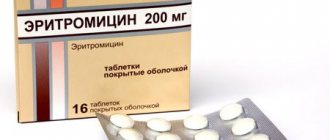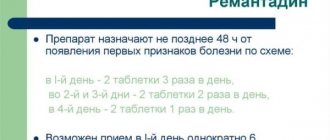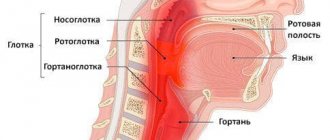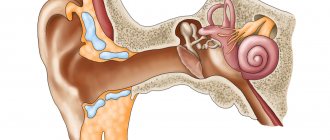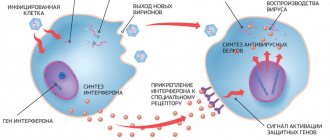Modern doctors tend not to use antibacterial agents for otolaryngological diseases in adult patients unless absolutely necessary. So, if a person is not bothered by severe pain, hyperthermia and swelling, and the patient’s general condition does not cause concern, the doctor takes a wait-and-see approach and antimicrobial drugs are not prescribed due to:
- high probability of emergence of drug-resistant bacteria;
- manifestations of side effects.
What are the best antibiotics for ENT diseases in adult patients?
Indications
In cases where the patient has the following diseases, timely administration of antimicrobial agents becomes vital:
- Purulent otitis is a common otorhinolaryngological disease, purulent inflammation of the middle ear involving all its anatomical parts in the pathological process.
- Sore throat is an infectious disease with local manifestations in the form of acute inflammation of the components of the lymphatic pharyngeal ring, most often the tonsils, caused by streptococci or staphylococci, less often by other microorganisms, viruses and fungi.
- Acute tonsillitis.
- Sinusitis is an inflammation of the mucous membrane of one or more paranasal sinuses. It may occur as a complication of acute runny nose, flu, other infectious diseases, as well as after injuries to the facial area.
What antibiotics are there for ENT infections?
When is antibacterial therapy prescribed?
When using antibiotics to treat diseases of the ENT organs, a number of rules must be followed. They will allow you to protect your body as much as possible from the negative effects of the drug. If they are ignored, then treatment for side effects will be required in the future, which is quite lengthy and complex.
The main danger when using antibiotics is the development of dysbiosis, which can be very severe. To prevent this phenomenon, the use of probiotics is prescribed in parallel with the drug. They will restore the correct balance of beneficial bacteria and maintain intestinal health.
The nature of inflammatory diseases of the respiratory tract, as well as the inner, middle and outer ear, can be viral, bacterial, allergic and post-traumatic in nature. Antibiotics for ENT infections are prescribed when the bacterial etiology of inflammation is confirmed or when there is a high risk of complications.
If rhinitis, pharyngitis, laryngitis are more common with viral infections (adenovirus, influenza, parainfluenza, respiratory syncytial infection), then inflammation of the paranasal sinuses, tonsils and middle ear in the vast majority of cases are bacterial in nature and are treated with antibacterial drugs.
Antibiotic Differences
Antibacterial drugs are divided into several therapeutic groups:
- Aminoglycosides are nephro- and ototoxic drugs that are effective against gram-negative bacteria that cause sexually transmitted diseases, as well as meningitis and digestive diseases. These antimicrobial agents are not used for otolaryngological diseases in children and adult patients due to low efficiency and a large list of adverse reactions.
- Sulfonamides are systemic antibacterial agents with a broad spectrum of action. They have a detrimental effect on clostridia, listeria, protozoa and chlamydia. Sulfonamides are extremely rarely recommended for the treatment of ENT diseases. As a rule, with individual intolerance to fluoroquinolones and drugs of the penicillin group.
- Penicillins are active against both gram-positive and gram-negative bacteria, therefore they are widely used in ENT practice for the treatment of adult patients and children. They have few contraindications, but can provoke serious allergies.
- Cephalosporins have a bactericidal effect. Used to eliminate streptococci and staphylococci, which in most cases cause sore throat, sinusitis and otitis media.
- Macrolides are the safest antibacterial agents. They eliminate mycoplasmas and chlamydia well. They have a bacteriostatic effect.
- Fluoroquinolones are the most popular highly effective broad-spectrum antimicrobial drugs. Helps with meningococcus and staphylococcus infections. Prohibited during pregnancy and breastfeeding; the drugs have an extensive list of adverse reactions.
A medical specialist makes a decision on prescribing drugs of a particular group for otolaryngological diseases, based on methodological recommendations, as well as the characteristics of the medical history, information about the effectiveness of previously used medications and reactions to prescribed drugs. What antibiotics are used for ENT diseases in adult patients?
Antibiotics for ENT diseases for adults and children
Diseases of the ENT organs caused by bacteria are treated with antibiotics. In this area of medicine, 4 groups are used: penicillins, cephalosporins, fluoroquinolones and macrolides. Each of them has its own characteristics, but all are accepted according to the same rules.
How to properly take antibiotics intended for the treatment of ENT organs?
- An antibacterial drug is prescribed by a doctor according to indications. The choice is influenced by the severity and nature of the disease. It also takes into account what antibiotics the patient has previously taken.
- Antibiotics are never prescribed for viral etiologies of the disease. They are simply ineffective against viruses.
- The effectiveness of the prescribed drug is assessed in the first 3 days of treatment.
- Side effects do not always require discontinuation of the medication. They may prescribe medications that relieve them, or adjust the dose.
- Diarrhea may occur during antibiotic therapy. Only a doctor should treat it.
- You cannot reduce the dosage on your own, as bacteria may become resistant to the drug.
- The medicine is taken at the same time to maintain its concentration in the blood.
- The drugs are taken before, during or after meals. Be sure to clarify this nuance.
These are broad spectrum drugs. Most often they are administered intramuscularly/intravenously for pneumonia, as well as other severe infections in the field of gynecology, urology and surgery. Cefixime is widely used for internal use.
Less commonly, penicillins provoke allergies, but in people with intolerance to penicillins they can cause negative reactions in the body. Cephalosporins are available for pregnant women and children; some drugs are approved from birth.
Possible negative reactions: allergies, nausea, diarrhea.
Contraindications: individual hypersensitivity.
Cefixime-based drugs: Pancef, Suprax, Ceforal Solutab.
Cefixime products are most often prescribed for children. Main indications: tonsillitis, pharyngitis, sinusitis, acute otitis media, exacerbation of chronic bronchitis. The suspension can be given to children from six months, and capsules - from 12 years. Treatment during lactation involves temporary cessation of breastfeeding.
Indications for use of this group: sore throat; sinusitis; scarlet fever; exacerbation of chronic tonsillitis and bronchitis; acute otitis media; community-acquired pneumonia.
Penicillins are low-toxic and have a wide spectrum of action.
Among the most common adverse reactions are allergies. There is only one contraindication – hypersensitivity.
Penicillins are more likely to cause allergic reactions than others. If urticaria or other negative reactions occur, stop taking the medication.
Penicillins are available for children from a very early age and for pregnant women.
Amoxicillin-based drugs reduce the effectiveness of contraceptives.
- Medicines containing amoxicillin. Trade names: “Amoxicillin”, “Amosin”, “Flemoxin Solutab”, “Hiconcil”. Amoxicillin is widely used for diseases of the ENT organs, especially in the treatment of sore throats. It is also prescribed for peptic ulcers. It is well absorbed when administered orally. Usually it is drunk 2-3 times a day. It is worth noting that the penicillin antibiotic amoxicillin is sometimes ineffective: some bacteria produce substances that destroy the medicine;
- Preparations with amoxicillin and clavulanic acid. With these substances, pharmacies sell such drugs as Amoxiclav, Augmentin, Panklav, Flemoklav Solutab, Ecoclave. Clavulanic acid prevents resistant bacteria from breaking down amoxicillin. This is the reason why these substances are often used in tandem for people who have often been treated with antibiotics. This combination is indicated for sinusitis. Use the medicine up to 3 times a day. These drugs are more likely than others to cause diarrhea and liver problems.
These antibiotics are indicated for sore throat, sinusitis, whooping cough, exacerbation of chronic bronchitis and tonsillitis, as well as infections caused by chlamydia and mycoplasma (for children over 5 years of age).
Most often, tablets and suspensions are prescribed. Macrolides act more slowly because they do not destroy, but only stop the proliferation of bacteria. They rarely cause allergic reactions.
Possible side effects: abdominal discomfort/pain, nausea, allergies, diarrhea.
Macrolides are contraindicated only in case of hypersensitivity to them.
Bacteria quickly become resistant to macrolides, so the course of therapy with them is not repeated for 3 months after the last one.
Preparations based on it: Azithromycin, Azitral, Azitrox, Azicide, Zetamax, Z-factor, Zitrolide, Sumamed, Hemomycin, Ecomed.
Azithromycin is the most commonly prescribed macrolide. It is well absorbed and tolerated. Azithromycin can suppress the proliferation of Haemophilus influenzae, a common cause of sinusitis and otitis. It is recommended to take it on an empty stomach. Since it is not eliminated from the body for a long time, the medicine is taken only once a day. Treatment can be very short - 3-5 days.
If necessary, azithromycin is prescribed to pregnant women. It is strictly contraindicated in cases of serious impairment of kidney and liver function.
Included in the following medications: Clarithromycin, Klabaks, Klacid, Fromilid, Ecositrin.
This antibiotic is used in the treatment of respiratory infections, as well as in the presence of Helicobacter pylori, which causes stomach ulcers. It destroys chlamydia, so it is prescribed to adults for sexually transmitted infections.
Side effects are the same as for erythromycin.
It can be used to treat children from six months of age, and used during pregnancy and lactation.
Midecamycin (midecamycin acetate)
Trade name "Macropen".
Very often it is used in the form of a suspension in the treatment of respiratory tract infections in children.
It is recommended to give it to your child 60 minutes before meals. The body quickly removes it, so you need to take this antibiotic at least three times a day.
Midecamycin is not used during lactation, and during pregnancy - only in difficult cases.
Indications: sinusitis; dysentery; salmonellosis; adnexitis; severe course of external otitis; exacerbation of chronic bronchitis; pneumonia; pyelonephritis and cystitis; chlamydia.
These antibiotics are usually prescribed only for severe illnesses. They are contraindicated during pregnancy and for children due to the possible effect on the formation of cartilage.
They are contraindicated in case of hypersensitivity, pregnancy, lactation. It can only be used by adults (over 18 years of age).
During treatment and 3 days after its completion, you should avoid direct sun.
Antibiotics from the fluoroquinolone group
- Ofloxacin. It is produced under the same name, as well as: “Zanocid”, “Zoflux”, “Ofloxin”, “Taravid”. It is usually used in the field of gynecology and urology. Not all diseases of the ENT organs are treated with its help. It is used for bronchitis, sinusitis, but it is not practiced for sore throat and pneumococcal pneumonia;
- Moxifloxacin. Produced under the name "Avelox". It is the most powerful of the fluoroquinolones. It is advisable to use it in the treatment of severe sinusitis, pneumonia and bronchitis;
- Ciprofloxacin. It is produced under the same name, as well as: “Tsiprinol”, “Tsiprobay”, “Tsiprolet”, “Tsipromed”, “Tsifran”, “Ekotsifol”. Of the fluoroquinolones, it is most often practiced. It is a broad-spectrum antibiotic, including activity against pathogens of severe diseases. Indications are similar to ofloxacin;
- Levofloxacin. Produced under the same name, as well as: “Levolet”, “Glevo”, “Lefokcin”, “Tavanik”, “Flexid”, “Floracid”, “Hyleflox”, “Ecolevid”, “Eleflox”. This is a broad spectrum antibiotic, active against all pathogens. Very often it is used for sinusitis and pneumonia. It is also prescribed for low effectiveness of macrolides and penicillins, and for severe infections.
Despite the fact that all of the drugs listed can be purchased without a prescription, self-medication is strictly not recommended. If a bacterial infection is suspected in children, they are immediately referred to an ENT specialist. Self-medication with antibiotics, even the safest ones, can cause serious damage to the body.
The materials posted on this page are informational in nature and intended for educational purposes. Site visitors should not use them as medical advice. Determining the diagnosis and choosing a treatment method remains the exclusive prerogative of your attending physician.
Source: https://allergology.ru/prostuda/antibiotiki-lor-zabolevaniy
Antibacterial agents to eliminate sinusitis in adults
Sinusitis is an inflammatory process of the membrane that affects the paranasal sinuses. The following inflammations are distinguished according to the place of occurrence:
- Sinusitis is a lesion of the maxillary sinuses.
- Ethmoiditis is inflammation of the mucous membrane of the cells of the ethmoid bone.
- Frontitis is a disease in which an inflammatory process develops in the mucous membrane of the frontal sinus.
- Sphenoiditis is an acute or chronic inflammation of the mucous base of the sphenoid sinus.
Sinusitis in adult patients and children can be acute or chronic; the main symptoms of the disease in the acute phase are:
- purulent nasal discharge;
- hyperthermia - overheating, accumulation of excess heat in the human body with an increase in body temperature, caused by external factors that impede heat transfer to the external environment;
- throbbing pain in the frontal region, above the upper jaw, which intensifies when tilting the head down. Painful sensations can intensify even from a cold wind blowing in the face.
The disease in its chronic form may have a blurred picture with less severe symptoms. Incorrect and untimely treatment of the disease can provoke meningitis and sepsis. Sometimes such complications end in death for the patient.
Penicillins
Systemic treatment of sinusitis is carried out after receiving test results, but if there is no time to wait, ENT chooses broad-spectrum antibiotics of the penicillin group, for example:
- "Amoxicillin."
- "Amoxiclav".
- "Flemoxin Solutab".
Amoxicillin is a broad-spectrum drug, but
, if its effectiveness in a particular situation is low, therapy is adjusted with the help of Amoxiclav, a protected antibacterial agent in which the main microelement is supplemented with clavulanic acid.
Both Amoxicillin and Amoxiclav are well absorbed in the stomach and intestines and distribute throughout all tissues of the body. The drugs are excreted in urine, so the main contraindication to their use is damage to the excretory system and general intolerance to the active substance.
Medicines for otolaryngological diseases must be taken orally or in injections.
"Flemoxin Solutab" is the same as "Amoxicillin", only the drug is produced under a different brand name. Dispensed from pharmacies in tablet form.
For diseases, ENT antibiotics are widely prescribed for children:
- "Erythromycin".
- Azithromycin.
- "Sumamed."
These antibacterial agents have little toxicity and do not provoke allergies, like penicillin drugs.
To treat patients, these drugs are used in the form of tablets, capsules and powder for making a suspension.
Antibiotic groups
All antibacterial drugs are divided into:
- Bacteriostatic. They stop the proliferation of bacteria, but do not completely destroy microorganisms; this function must be performed by the immune system.
- Bactericidal. Destroy bacteria.
The first group is less harmless to the body.
There are the following groups of antibiotics:
- Penicillins. They belong to the class of β-lactam antibiotics. The substance penetrates into cells and helps with scarlet fever, sore throat and pneumonia. The disadvantages include the fact that penicillin is quickly eliminated from the body.
- Cephalosporins. They belong to the same class as penicillins. There are 3 generations of cephalosporins. 1st generation drugs are suitable for the treatment of ENT diseases, namely Cefalotin, Cefazolin and Cephalexin.
- Aminoglycosides. These are broad-spectrum drugs. They are very toxic, but effective even against tuberculosis. These include Monomycin, Streptomycin and Gentamicin.
- Macrolides. This group of drugs is the safest. Macrolides can be used for a long time, they are approved for the treatment of young children, pregnant and lactating women, as well as patients with allergies to penicillins and cephalosporins. The most popular drugs are Erythromycin and Azithromycin.
- Fluoroquinolones. These are broad-spectrum antibiotics that have no natural analogue. There are 2 generations. The first includes Ofloxacin and Ciprofloxacin, the second - Levofloxacin and Sparfloxacin.
Only a doctor should prescribe the drug.
USEFUL: How to increase a child’s immunity if he is sick? Read more…
Cephalosporins
The most popular drugs are third generation, for example, Ceftriaxone. The medication helps to cope with purulent sinusitis; it is produced in the form of a powder, from which an injection is prepared using solvents. The injection is painful, and pronounced local reactions are likely to occur.
For local treatment of inflammatory processes in the lining of the nasal sinuses in adult patients, antibiotic drops and sprays are used:
- “Isofra” is a French medicine whose structure includes framycetin, which is active against coccal microorganisms.
- "Polydexa" copes well with sinusitis and otitis media. Available in the form of spray and drops. The drug is effective for purulent discharge.
- "Bioparox" has an active ingredient - fusafungin. Produced in the form of an aerosol, it eliminates swelling of the mucous membranes of the nasal sinuses.
For effective treatment of sinusitis with local antimicrobial drugs, it is necessary first of all to use vasoconstrictor drops, which will eliminate swelling and provide the necessary patency to the antibiotic.
General principles of use
You should take antibacterial drugs only after receiving the results of an examination for bacterial flora. Peculiarities of using antibiotics in the treatment of ENT organs:
- The course of therapy is 7-10 days; no days or times of administration should be missed. Treatment must be complete; if it is not fully cured, then relapses are possible.
- If after 2 days of antibiotic therapy there is no effect, it is necessary to change the drug.
- For children, it is worth using antibiotics in the form of powder or tablets.
- If side effects occur in the form of allergies or severe digestive upset, you should stop taking the drug and consult a doctor.
- The duration and regimen of treatment should be determined by an otolaryngologist; self-medication is unacceptable.
Since antibiotics have many side effects, before using them you need to make sure that you are not allergic to a particular class of antibacterial drugs.
There are several principles for the use of drugs from the group of antibiotics that require mandatory compliance. Violations of them can lead to serious consequences. The drug should always be prescribed by an otolaryngologist, and if not, then by a therapist.
1. At the initial visit, if it is not possible to wait for the results of the smear, a broad-spectrum drug is prescribed for treatment, effective against the main pathogens of the identified pathology. After the results of the study are received, the treatment regimen will be edited if necessary.
2. If there is no result, the drug must be replaced. In such a situation, a second smear may be necessary, since failure of treatment most likely means that a mistake was made in choosing the medicine. If the patient does not comply with the dosage regimen, then the lack of effect from the antibiotic is associated with the development of a drug-resistant form of the pathogen.
3. Minimum course duration is 7 days. Be sure to complete the treatment completely. Even if it seems that the medicine is no longer needed, you should definitely continue taking it. Otherwise, if the patient does not complete the course, it will cause the appearance of a particularly persistent pathogen, against which antibiotics from this category will be useless in the future.
4. When choosing a drug, it is necessary to study the patient’s chart in order to determine which antibiotic drugs have already been administered recently. In this case, you need to choose a different remedy, since the previous one may no longer be effective enough. It is highly undesirable to use the same drug several times in one year. This is allowed only if there is no other way out;
Also, the patient must inform the attending physician about what medications he is taking, since not all drugs can be combined with antibiotics. In this case, therapy is based on a special plan if it is not possible to stop the medication.
Otitis
Pathological condition of the hearing organ of infectious origin. There are several types of otitis media:
- outer;
- average;
- interior.
The most popular is otitis media. It covers the cavity from the eardrum to the area where the auditory bones are located. Most of the patients are children under five years of age, but adults also suffer from this disease.
Main sources of the disease:
- Pseudomonas aeruginosa and hemophilus influenzae.
- Staphylococcus.
- Pneumococcus.
- Fungi of the genus Candida.
Medicines for the treatment of otitis in adult patients
Systemic antibacterial agents are used for therapy:
- "Amosil."
- "Ospamox".
- "Flemoxin".
- "Amoxiclav".
- "Zinnat".
- "Aksotin".
- "Zinacef".
- "Cephurus".
- "Ceftriaxone".
In exceptional situations, otolaryngologists recommend drugs from the fluoroquinolone group to adult patients, for example, Norfloxacin in tablet form.
Local therapy is also effective, which is carried out with drops of two types, which contain only an antibiotic: “Cipropharm”, “Normax”, “Otofa”.
If the mucous membrane of the ear canal is infected with fungi, doctors recommend combination creams: Clotrimazole, Pimafucin, Pimafucort.
When choosing the most appropriate ear drops for adults and children, it is critical to determine whether the eardrum has been perforated, which typically occurs with otitis media. If a breakthrough of pus is detected, the patient can only use one-component antimicrobial drops without analgesic or anti-inflammatory effect.
In addition, it is also not recommended to use an aminoglycoside antibiotic:
- "Gentamicin."
- "Framycetin".
- "Neomycin."
- "Polymyxin".
These active trace elements have an ototoxic effect on the auditory ossicles and the mucous membrane of the inner ear, which can cause hearing loss, deafness or inflammation of the membranes of the brain.
Therefore, treatment of otitis cannot be carried out without examination and supervision of a medical specialist.
Angina
An acute infectious disease, the pathogens of which damage the palatine tonsils. Signs:
- Increase in body temperature to high levels.
- Severe sore throat.
- Enlarged palatine tonsils.
- Ulcers or serous plaque on the tonsils.
- Migraine is a neurological disease, the most common and characteristic symptom of which is episodic or regular severe and painful attacks of headache in one side of the head.
- Oppression.
- Apathy is a symptom expressed in indifference, indifference, a detached attitude towards what is happening around, in the absence of the desire for any activity.
- Lethargy.
- Paleness of the skin.
- Tachycardia is a special condition of the body in which the heart rate exceeds 90 beats per minute.
The diagnosis is made based on studies of the purulent contents of the throat, as well as an assessment of the patient’s general condition. The following ailments are likely to occur:
- Myocarditis.
- Rheumatism.
- Meningitis.
- Pyelonephritis.
Otolaryngological diseases can be eliminated in adults with antibiotics (an ENT specialist will prescribe the necessary ones after diagnosis). Respiratory tract infections are caused by:
- streptococcus;
- staphylococcus;
- staphylococcus and streptococcus.
Contraindications
Antibacterial drugs kill not only pathogens, but also beneficial microorganisms. After a course of treatment, the body's defenses are reduced, and the functioning of the gastrointestinal tract may be disrupted.
The effect of antibiotics is strong, so before using them you need to carefully read the instructions and under no circumstances take these drugs if there are contraindications:
- pregnancy and breastfeeding;
- allergic reactions;
- gastrointestinal diseases;
- cholestatic jaundice, hepatitis and other severe liver diseases;
- renal failure.
You should not combine antibiotics with alcohol, as well as drugs containing ergotamine and dihydroergotamine.
If colds, which are accompanied by severe sore throat, runny nose and nasal congestion, do not go away after a week of treatment, then it is worth talking about the addition of a bacterial infection. The body cannot overcome bacteria, so you need to take antibiotics.
Antibiotics to eliminate sore throat in adult patients
Very rarely, infection with Staphylococcus aureus, pneumococcus, or mixed flora occurs. The spreader of the infection is always an infected person, the route of transmission is airborne droplets. Systemic therapy for adult patients is carried out with the following medications:
- "Amoxicillin"
- "Amoxiclav".
- "Erythromycin".
- "Sumamed."
- "Zitrolide".
- "Hemomycin."
- "Zinnat".
- "Ceftriaxone".
- "Ciprofloxacin."
Local treatment in adult patients is carried out by irrigating the pharynx with antimicrobial agents “Bioparox”, “Hexoral”, as well as frequent gargling with solutions “Hexoral”, “Oracept”. All of these are medications with antiseptic substances for additional treatment of sore throat.
The sources of acute tonsillitis cannot be suppressed only by using local drugs. An otolaryngologist, having made such a diagnosis to a patient, necessarily recommends systemic antibacterial agents.
As a rule, tonsillitis is called tonsillitis, which can be either acute or chronic. According to experts, this ENT disease can rarely be caught from the environment; in most cases, self-infection occurs due to decreased immunity. The loss of protective forces causes the growth of opportunistic microflora of the mouth and pharynx. Tonsillitis constantly appears in the presence of caries, as well as sinusitis and stomatitis.
